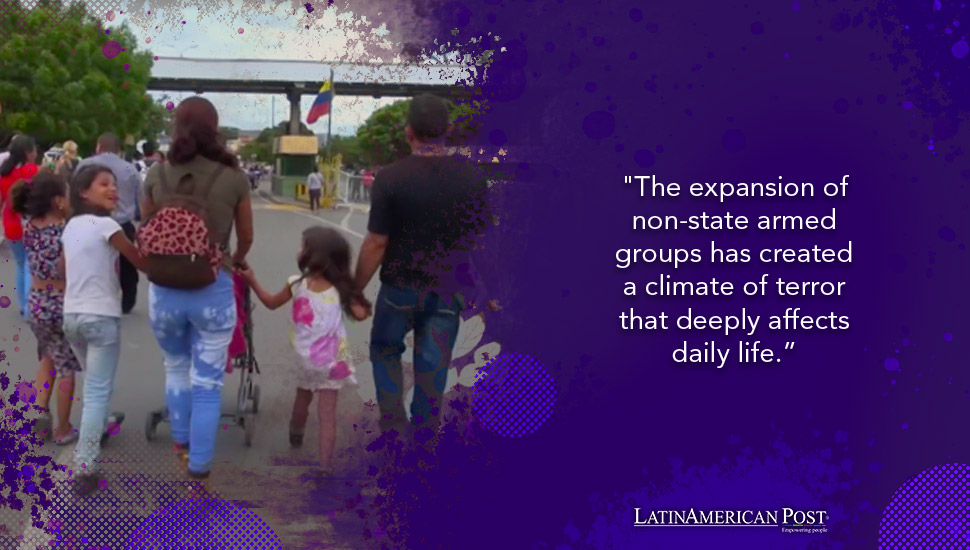Colombia’s Escalating Crisis: A Call for Urgent Peace Plan Revision

The humanitarian crisis in Colombia is worsening, with millions affected by escalating violence. The government’s current peace plan is failing, and immediate action is needed to protect civilians and restore hope for lasting peace.
Colombia’s situation is rapidly deteriorating, with the number of Colombians living in areas controlled by armed groups soaring by 70 percent since 2021, according to the Norwegian Refugee Council (NRC). Today, nearly 8.4 million Colombians find themselves in zones of conflict, 3.5 million more than just three years ago. The resurgence of violence, particularly in rural areas, has plunged the country back into a state of fear and insecurity reminiscent of the dark days before the 2016 peace deal. The reality on the ground is stark: civilians are suffering on an unprecedented scale, and their plight is being largely ignored by both the Colombian government and international aid agencies.
The expansion of non-state armed groups has created a climate of terror that deeply affects daily life. In some regions, armed actors have effectively taken control, confining civilians to their communities under threat of violence. This “confinement,” as it is known, has grown alarmingly, with 65,000 people prevented from leaving their areas in the first half of this year alone. The 20 percent increase in confinement in 2024 compared to the previous year is a testament to the failure of current peace efforts. Victims of the conflict are becoming increasingly invisible, trapped in areas where they are unreachable by humanitarian aid.
The surge in violence has also turned schools into battlegrounds, with tens of thousands of children having their education suspended due to the conflict. Since January 2022, nearly 30,000 students have been caught in the crossfire as schools are targeted, occupied by armed groups, or become sites of forced recruitment. This represents a grave violation of children’s rights and a significant setback in Colombia’s efforts to build a peaceful future. The government’s commitment to ensuring safe schools must be more than just rhetoric—it requires urgent and concrete action to protect society’s youngest and most vulnerable members.
The Flawed Peace Plan
Once a beacon of hope, the Colombian government’s peace plan is now failing the people it was designed to protect. When the peace agreement was signed in 2016, it was hailed as a monumental achievement, a new chapter for a nation scarred by decades of armed conflict. However, the recent surge in violence highlights critical flaws in the implementation and scope of the peace process. The current peace plan lacks the necessary mechanisms to address the evolving nature of the conflict, particularly the rise of new armed groups and the continued suffering of civilians.
The hope for peace that was palpable in Colombia a decade ago is fading. Jan Egeland, Secretary General of the NRC, who recently visited conflict zones in the country, echoed this sentiment, noting that the violence has reached “devastating levels” akin to the period before the 2016 peace deal. The peace efforts by all parties to the conflict must urgently prioritize ending the violence and protecting victims, or the opportunity to restore peace will be lost.
One of the most glaring issues with the current peace plan is its inability to address the needs of rural communities, where the impact of the conflict is most severe. The plan has failed to provide adequate security and protection for these populations, leaving them vulnerable to the whims of armed groups. Furthermore, the reintegration of former combatants into civilian life has been slow and ineffective, creating a vacuum that new and existing armed groups have exploited. This has led to a cycle of violence that the current peace framework is ill-equipped to break.
To address these challenges, the peace plan must undergo a comprehensive revision. The Colombian government needs to work closely with local communities, civil society organizations, and international partners to develop a strategy reflecting the current realities. This includes enhancing security measures in conflict-prone areas, improving the reintegration process for former combatants, and ensuring that the voices of victims are heard and respected in the peace process. Without these critical changes, the peace plan will continue to falter, and the suffering of Colombia’s civilian population will only worsen.
Civilian Suffering: The Human Cost of Inaction
The human cost of the Colombian government’s inadequate response to the escalating violence cannot be overstated. Colombia remains one of the countries with the highest number of internally displaced persons, with 5.1 million people forced to flee their homes due to conflict and violence by the end of 2023. These numbers reflect a humanitarian crisis of staggering proportions that demands immediate and sustained attention from the Colombian government and the international community.
For the millions of Colombians living in conflict zones, daily life is a constant struggle for survival. Armed groups continue to impose their will through killings, intimidation, landmines, and crossfire, making it nearly impossible for civilians to lead everyday lives. The confinement of entire communities is a particularly egregious violation of human rights, leaving people isolated and without access to essential services or humanitarian aid. The NRC’s reports paint a grim picture of a population that is being systematically neglected and left to fend for itself in the face of relentless violence.
The impact of the conflict on children is particularly devastating. The disruption of education not only deprives children of their right to learn but also exposes them to more significant risks of exploitation and abuse. Schools, which should be safe havens, have become targets in the conflict, further eroding the social fabric of these communities. The Colombian government’s failure to protect its children from the horrors of war is a damning indictment of its current peace strategy.
The situation is equally dire for the refugees and migrants who traverse Colombia in search of safety and better opportunities. Many pass through the treacherous Darien Gap, a journey fraught with danger as they attempt to reach North America or Mexico. The Colombian government and other Latin American governments have pledged to protect these vulnerable populations under the Cartagena Declaration and the upcoming Chile Plan of Action. However, the reality on the ground suggests these commitments are not being met. As Egeland pointed out, protecting the tens of thousands of people risking their lives on these migratory routes must be a priority. The failure to do so not only endangers their lives but also undermines regional stability.
Revising the Peace Plan for Lasting Change
The current trajectory of violence in Colombia is unsustainable. The Colombian government must recognize the gravity of the situation and take immediate steps to revise its peace plan. The peace process must be reinvigorated with a renewed focus on protecting civilians, particularly in rural areas where the conflict is most intense. This will require a multi-faceted approach that addresses the immediate security concerns and the long-term needs of the population.
First and foremost, the government must commit to ending the cycle of violence that has plagued Colombia for decades. This means holding armed groups accountable for their actions and ensuring that those responsible for human rights violations are brought to justice. The government must also prioritize the safety and security of civilians, particularly in conflict-prone areas where the presence of armed groups is most pronounced. This could involve increasing the presence of security forces, improving intelligence-gathering capabilities, and working closely with local communities to develop tailored security strategies.
Second, the peace plan must include robust measures to reintegrate former combatants. The slow and often ineffective reintegration process has left many ex-combatants vulnerable to re-recruitment by armed groups. The government must invest in programs that provide education, vocational training, and psychological support to help former fighters transition back into civilian life. Additionally, these programs must be coupled with community-building initiatives that promote reconciliation and social cohesion.
Third, the peace process must be inclusive, emphasizing the voices of victims and marginalized communities. The government must ensure that the concerns and needs of these populations are at the forefront of the peace negotiations. This includes reparations for victims, addressing land rights issues, and ensuring that all Colombians access essential services such as healthcare and education. Only by addressing these underlying issues can the peace process hope to achieve lasting success.
Finally, the international community must be more active in supporting Colombia’s peace efforts. Increased funding from international donors is essential to address the humanitarian needs of civilians affected by the conflict. This funding should be directed toward immediate relief efforts and long-term development projects that help build resilience in conflict-affected communities. The international community must also hold the Colombian government accountable for its commitments under the peace plan and ensure progress.
The Time for Action is Now
The situation in Colombia is dire, and the current peace plan fails to meet the population’s needs. The Colombian government must act swiftly and decisively to revise its peace strategy and address the escalating violence. This will require a comprehensive approach that prioritizes the protection of civilians, the reintegration of former combatants, and the inclusion of marginalized communities in the peace process.
Also read: Colombia’s Left Turn: A Decision to Reconsider
The stakes could not be higher. If the Colombian government fails to act, the country risks sliding back into a full-scale conflict that could have devastating consequences for millions of people. The international community must also step up its efforts to support Colombia in this critical moment. The time for action is now. The future of Colombia—and the lives of millions of its citizens—depends on it.





